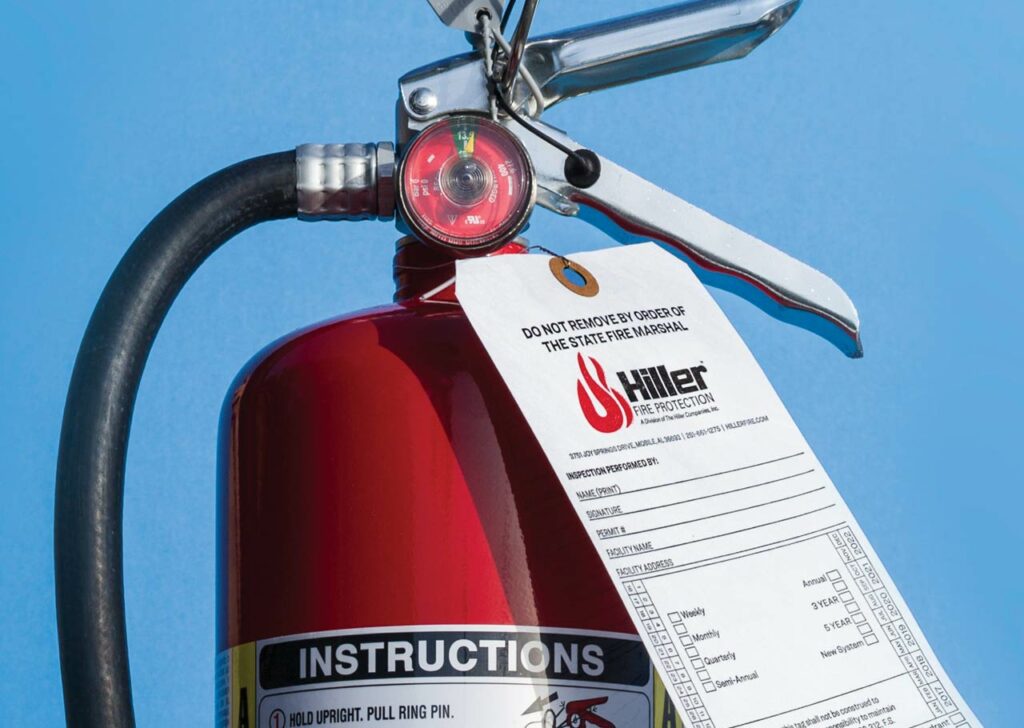Fire Extinguisher Inspection
Fire extinguisher inspection, testing, and recharging services.
In any environment, the presence of functional fire extinguishers is crucial for fire safety preparedness. Regular inspection and maintenance of fire extinguishers are essential to ensure their reliability in the event of a fire emergency. This comprehensive overview will shed light on the importance, benefits, and operational aspects of fire extinguisher inspection services, catering to the needs of property owners seeking reliable fire safety solutions.

Importance of Fire Extinguisher Inspections
Regular fire extinguisher inspections hold significant importance for the safety and compliance of any property:
- Safety Preparedness: Well-maintained fire extinguishers provide an immediate response to small fires, preventing them from escalating and causing substantial damage.
- Regulatory Compliance: Adherence to fire safety regulations and standards is mandatory for property owners. Regular inspections ensure compliance with these regulations.
- Liability Mitigation: Property owners carry the responsibility of ensuring a safe environment for occupants. Regular inspections demonstrate a commitment to safety and may reduce liability in the event of a fire incident.
Benefits of Fire Extinguisher Inspections
- Risk Mitigation: Regular inspections ensure that fire extinguishers are functional, reducing the risk of equipment failure during an emergency.
- Compliance Assurance: Meeting regulatory standards through regular inspections mitigates the risk of fines and penalties.
- Peace of Mind: Property owners and occupants can have confidence in the readiness of fire extinguishers to tackle potential fire hazards.
How Fire Extinguisher Inspections Work
During a fire extinguisher inspection, certified technicians conduct a thorough examination of each extinguisher. This includes checking for visible damage, proper pressure levels, accessibility, and ensuring the presence of accurate and up-to-date inspection tags.
Types of Fire Extinguisher Inspections
- Monthly Visual Inspections: Quick visual checks to ensure that the extinguisher is in its designated place, shows no signs of damage or tampering, and has a readable pressure gauge.
- Annual Maintenance Inspections: A more comprehensive inspection involving a thorough examination of the extinguisher’s mechanical parts, internal condition, and pressure tests.
Installation Process
The installation of fire extinguishers involves:
- Assessment: Identifying areas prone to fire hazards and determining the appropriate type and placement of extinguishers.
- Selection: Choosing the right type of extinguishers based on the nature of potential fire risks.
- Installation: Professional installation of extinguishers in strategic locations, ensuring compliance with safety regulations.
Maintenance Requirements
Regular maintenance is essential to keep fire extinguishers in optimal condition. This includes:
- Recharging: Ensuring that the extinguisher is fully pressurized and ready for use.
- Hydrostatic Testing: Periodic testing of the extinguisher’s pressure vessel to ensure integrity.
- Record Keeping: Maintaining accurate inspection and maintenance records as required by regulations.
In conclusion, fire extinguisher inspections are integral to maintaining a safe and compliant environment. Property owners can ensure the reliability of their fire extinguishers by engaging certified professionals to conduct regular inspections and maintenance.
Fire Extinguisher Inspections (NFPA 10)
Meeting NFPA 10 Requirements
- Our expert technicians provide complete fire extinguisher inspection services to meet the requirements of NFPA 10, Standard for Portable Fire Extinguishers. Key elements of our inspections include:
- Annual visual inspection of all extinguishers to check for damage, corrosion, leakage, or clogged nozzles. Verify tamper seals are intact.
- Monthly quick check of extinguishers to confirm they are in designated locations and have proper pressure.
- Periodic thorough examinations involving a complete physical inspection of extinguisher components. Conducted every 5, 6, or 12 years based on extinguisher type.
- Annual weight inspections of CO2 extinguishers to verify full charge.
- Six year maintenance involving discharging and recharging extinguishers as required by extinguisher type.
- Hydrostatic testing of extinguisher cylinders at intervals between 5 to 12 years.
- We provide inspection tags with date and initials for each inspected extinguisher. Our technicians are certified in the inspection, maintenance, and recharging of all fire extinguisher types. We maintain replacement stock to swap out any deficient extinguishers immediately. Contact us today to schedule your expert NFPA 10 fire extinguisher inspections!
- Annual certification, 6-year internal maintenance and 12 year hydrostatic testing
- New extinguisher sales
For dependable fire extinguisher inspection services tailored to your specific needs, contact The Hiller Companies today. Our certified technicians are dedicated to ensuring the safety and security of your property through meticulous inspections and expert maintenance.
